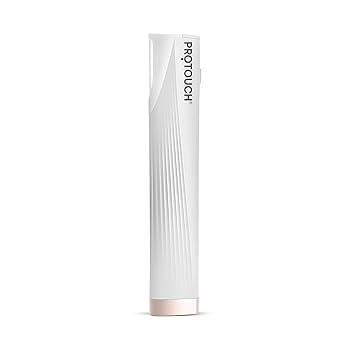Notifications

7 minutes, 2 seconds
-19 Views 0 Comments 0 Likes 0 Reviews

When it comes to skincare, exfoliation is one of the most crucial steps to maintaining a radiant and smooth complexion. One of the increasingly popular exfoliation techniques is dermaplaning—a method that involves gently scraping away dead skin cells and peach fuzz using a specialized tool. However, many people often wonder: how is a dermaplaning tool different from the regular razors we use for shaving? Today, we’re diving deep into the unique features that set dermaplaning tools apart, with a particular focus on the highly regarded ProTouch Dermaplaning Tool.
Dermaplaning is a manual exfoliation technique that uses a precision blade to remove the outermost layer of dead skin cells along with fine facial hair (often called “peach fuzz”). The result is smoother, brighter skin with improved texture and tone. Unlike traditional shaving, which is usually done to remove coarse hair from areas like legs or underarms, dermaplaning is carefully designed for delicate facial skin.
The most obvious difference lies in the blade itself. Regular razors are designed primarily for removing coarse body hair, such as on the legs or underarms, and often feature multiple blades packed closely together. These blades are sharp and designed to cut hair quickly, which can sometimes cause irritation or micro-cuts on delicate facial skin.
In contrast, a ProTouch Dermaplaning Tool features a single, ultra-sharp, surgical-grade blade specifically engineered to glide smoothly over the skin’s surface without causing irritation. The blade angle is optimized to gently exfoliate while shaving fine facial hairs without nicking or cutting the skin.
Regular razors often come with thick, bulky handles designed for a firm grip on large surface areas. While great for body shaving, this design is less effective for the precise movements required in dermaplaning.
Dermaplaning tools like ProTouch are crafted with ergonomics in mind. They have slim, lightweight handles that allow for delicate, controlled strokes along the contours of the face. This design ensures safety and accuracy, reducing the risk of accidental cuts.
Regular razors are intended for hair removal only. They don’t exfoliate dead skin cells or contribute to improving skin texture. On the other hand, dermaplaning tools serve a dual purpose: they remove both fine facial hair and the superficial layer of dead skin cells.
This exfoliating action can enhance skincare product absorption and leave skin looking fresher and more radiant. ProTouch Dermaplaning Tools are explicitly marketed and designed for this cosmetic benefit, often used by professionals and skincare enthusiasts alike.
Due to the sensitive nature of facial skin, dermaplaning tools often incorporate additional safety features. ProTouch, for example, uses blades made of surgical steel that are replaceable and come with protective covers to maintain hygiene and prevent accidental injuries.
Regular razors don’t usually come with these specialized safety measures because the intended skin areas are less delicate. Moreover, dermaplaning requires precise technique to avoid irritation or cuts, so tools like ProTouch emphasize ease of use and control to make the process safer for at-home use.
Regular razors typically require frequent blade changes depending on hair thickness and frequency of use. Multiple-blade cartridges are disposed of after dulling.
Dermaplaning tools like the ProTouch Dermaplaning Tool have blades that last longer due to their single, ultra-sharp surgical-grade design. Additionally, the blades are replaceable, allowing users to maintain hygiene and sharpness without replacing the entire tool. This makes dermaplaning a cost-effective option for long-term skincare.
Because dermaplaning tools remove a thin layer of dead skin cells along with peach fuzz, they are recommended for use every 3 to 4 weeks. Overuse can cause skin sensitivity.
Regular razors, used primarily for coarse hair removal, can be used much more frequently, even daily in some cases. The goals behind these tools are different, so the frequency of use varies accordingly.
Among the numerous dermaplaning tools available on the market, the ProTouch Dermaplaning Tool stands out for several reasons:
Precision and Control: Its ergonomic design allows for safe and precise exfoliation, even for beginners.
Surgical-Grade Blades: The blades are sharp enough to remove peach fuzz and dead skin without irritation.
Affordable and Durable: Replaceable blades mean you can maintain your tool without continuous repurchasing.
Professional Quality: Trusted by skincare professionals, ProTouch offers salon-level results from the comfort of your home.
In summary, while dermaplaning tools and regular razors may look similar at first glance, they serve distinctly different purposes and are designed accordingly. The ProTouch Dermaplaning Tool is specially crafted to safely and effectively exfoliate delicate facial skin while removing fine hair, offering a cosmetic benefit far beyond what a regular razor can provide.
If you’re looking to elevate your skincare routine with smooth, glowing skin, investing in a high-quality dermaplaning tool like ProTouch could be the game-changer you need. Just remember, proper technique and hygiene are key to reaping the benefits and minimizing any risks.
Dermaplaning At Home Best Dermaplaning Tool Dermaplanning Tool

